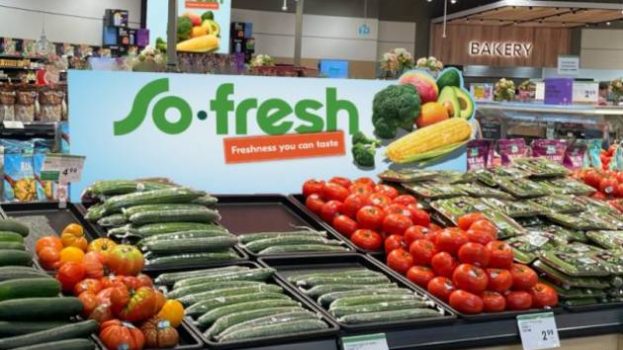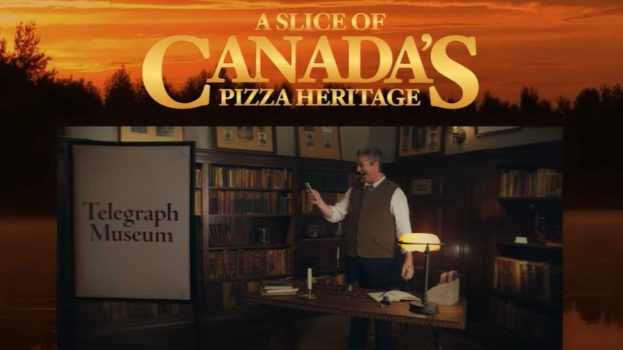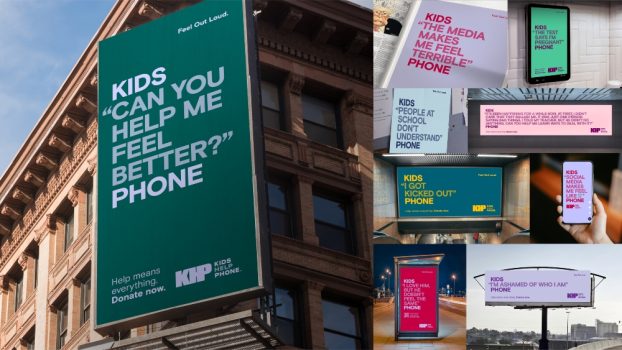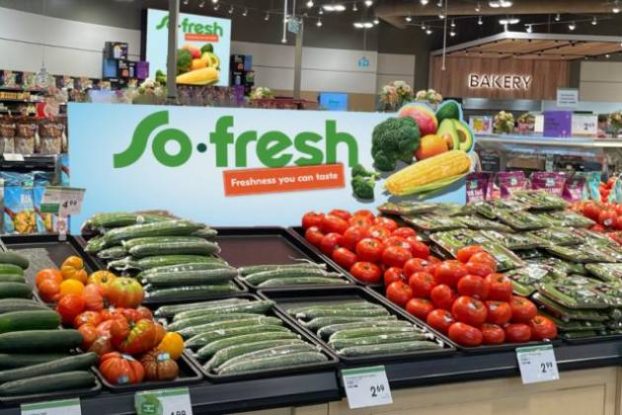When he turned 13, Jean Champagne was given an unusual birthday present: a Dairy Queen uniform and the opportunity to make ice cream cones in his hometown of St. Catharines, Ont. ‘It was a big deal,’ says Champagne, who was the middle child of a large family.
From son of a franchise owner to current president of the Canadian arm of DQ and COO of the International Group, Champagne hasn’t strayed far from his roots. Yet his ties to the past aren’t holding him back. In fact, they’ve helped make the 22-year veteran of the company a global success.
Two years after taking over the job as Dairy Queen Canada president in 1999, Champagne engineered a management coup. He did what his colleagues in the U.S. have been unable to do: mend the rift between head office and disgruntled restaurant owners.
For over 12 years, Dairy Queen HQ has been in conflict with its franchise owners over pricing of products sold from the corporation to the franchisees. While the U.S. operators are still at loggerheads, Champagne brokered a peace deal in Canada. He created the Unified Purchasing Alliance, a board comprised of franchisees and head office representatives who collectively negotiate price.
‘When I took over the [president] position, it took five years of continual relationship building for both sides to understand we were on the same page,’ says Champagne. But the time invested is now paying off. ‘The deal has allowed us to work better,’ he comments. DQ Canada saw same-store sales growth of 8% in Canada compared to only 2% in the U.S. He has also given a charity the company supports, Children’s Miracle Network, a push in revenues. Since creating Miracle Treat Day four years ago, donations to CMN jumped from under $200,000 to over $1 million annually.
The stabilization Champagne brought to DQ Canada couldn’t have come at a better time. Dairy Queen is beginning a long rebranding journey that will see its business split into two separate entities – one targeting the treat-seekers (primarily women and kids who want an ice cream fix) and its new concept DQ Grill & Chill restaurants targeting families who want a quick meal but are willing to spend a bit more for better ambience and table service.
The new DQ Grill & Chill restaurants still serve frozen treats, but will offer a greater range of food items. The logo and plastic seating of the old franchises will eventually be phased out, along with the old ‘Brazier’ nomenclature. ‘It’s a term that no longer has any meaning,’ says Champagne.
‘The market is saturated in QSR,’ says Denise Hutton, VP marketing, DQ. By taking a different approach to the QSR business, ‘we hope to steal market share,’ she says. By splitting the franchise into two distinct brands, DQ is also hoping franchisees will further invest in the company. They can have seasonal shops that focus on ice cream, and a separate restaurant that focuses on food. ‘The two [brands] won’t compete with one another,’ says Hutton.
The reincarnation will not be an easy one. DQ – like all other QSR companies – is facing a health-kick backlash. ‘There’s a large push into healthier eating, and while one could single out burgers as the issue, the fact that DQ is into desserts and ice cream puts them another step or two deeper into the [quagmire],’ says retail analyst Ed Strapagiel of Kubas Consultants in Toronto.
However, the new branding is not about getting out of the burger business, it’s about offering variety, says Hutton. While DQ is committed to ‘exiting trans fats,’ according to Champagne, sales of healthier foods like quesadillas and soup make up less than 3% of its revenues.
Consumers will tell you they want more healthy choices, says Champagne: ‘But if you talk to industry leaders, they will all tell you that the consumer speaks with their stomach versus their brain.’ That means customers come into the restaurant with good intentions, ‘but they will gravitate to…an indulgent product,’ he says. The trick is to tweak but not transform. ‘We [still] need to stick to our knitting.’
Terry Smith, who owns two operations, a DQ in Curtis, Ont., and a new DQ Grill & Chill in Bowmanville, Ont., can attest to this. He says the healthier foods are not yet being embraced by customers. Smith blames it partly on the fact ‘that there’s no advertising promoting these products.’ His Grill & Chill operation sells only one or two salads a day, and he’s pulled soup off the menu entirely. ‘We still sell a lot of core products, burgers and french fries…just more of them,’ he says.
Hutton admits that marketing the new Grill & Chill operations is tricky. While the company supports its new franchisees with a Grill & Chill grand opening package, none of the exclusive products will be promoted on television. Because the branding makeover is in a transitional phase (there are only 24 new Grill & Chills in Canada compared to 498 old DQ franchises), DQ headquarters must focus on food products that sell across the board. That said, all of the 2007 television spots will be filmed inside the new Grill & Chill restaurants to make ‘consumers aware that we are in a process of change,’ she says.
When it comes to advertising, cake is the word in Canada. Frozen cakes make up 13.6% of DQ Canada’s revenues compared to just 7.2% in the U.S. Canadians’ passion for cakes is continuing to snowball, says Champagne. In 2005, DQ introduced Blizzard Cakes with three flavours – Chocolate Xtreme, Reese’s Peanut Butter Cup and Oreo. Since then, DQ has introduced seven new flavours and will introduce an eighth flavour in spring 2007.
While the new cake is on the ad agenda this year, by far the biggest marketing push will be for DQ’s new dessert line. After weeks of tests in Durham, Ont., DQ is planning to unveil its freshly baked waffle cones and waffle sundae bowls in a three-month television blitz starting in April. The ads will focus on the aroma of the in-house baking, says Hutton. The new waffle treats are targeted at women over 35 – an older audience than DQ’s Blizzard treats. The first three flavours are chocolate-covered strawberry Waffle Bowl, the Caramel Waffle Crisp Blizzard and the Turtle Waffle Bowl sundae.
The 2007 rollout of new flavours and platforms means plenty of work for DQ’s AOR Grey Worldwide Canada, based in Toronto. Grey Canada, consulting with DQ Canada and DQ U.S., develops all the radio commercials that run across North America. Grey Canada and Hutton also consult with Grey in New York on TV spots that will run in Canada.
‘[DQ doesn’t] have the money that other QSR accounts do so they really worry about impact,’ says Grey president/CEO John Clinton. ‘It’s quite a close team, and there’s a ton of Canadian autonomy,’ he adds.
‘The brand is slightly off-centre; it’s trying to be more fun, more an entertainment brand,’ he says. What makes it interesting, but also more challenging, is the fact that this is a brand that’s relevant to all ages – kids, teens and adults, he says. It’s not like a McDonald’s which attracts only certain demographics at certain times of their lives.
The Canadian DQ op has been so successful that Champagne was named COO of the International Group two years ago. That arm has 398 restaurants worldwide including 85 in China, 200 in Thailand, 72 in Mexico, 26 in the Middle East and five in the Philippines, and Champagne has been spearheading efforts to grow DQ’s business overseas – particularly in China and the Philippines.
Still, when asked what keeps him awake at night, it’s keeping folks happy at home. He doesn’t want another franchisee revolt and he wants to see existing investors embracing the new brand approach. ‘To us, new franchisee sales are important, but another indication of the health of your system is the investment franchisees are making in their existing locations,’ says Champagne.
What’s the biggest change in recent years?
We’re truly trying to delineate ourselves – because we are in two businesses, food and treat, and we know from our research and history that the consumer sometimes has trouble identifying what [he] can get at the location [he’s] driving up to. One of the things we are trying to do is re-orient the organization to focus on what we call a food-centric and treat-centric vision.
You are separating them? Why?
We’re trying to make sure there are two separate concepts. The DQ [restaurant] will be treats-based, and the DQ Grill & Chill will be a food-focused restaurant plus having all the other [ice cream] offerings as well.
So we are going to make sure the look and feel of our two strategic paths are uniquely obvious to the consumer. We will continue to develop more treat-centred platforms [like the waffle cone]…and move all of our food concepts under the Grill & Chill banner. This will [also] give our franchisees two distinct opportunities for investment: expanding their businesses, but also in a system as old as ours, [the rebranding] is giving them a strategic vision for reinvestment.
Can you talk more about the positioning of DQ Grill & Chill as it relates to Canada?
The challenge we have is that oftentimes just the [term] DQ symbolizes ice cream. Depending upon where you grew up, it will influence your mind-set. ‘Is it open year round? Is it a place to go just for a treat or [can you get] food?’
When we looked at Grill & Chill, one of our goals was to stand apart from [other QSRs]. If you look at the facility, how it’s built [brick with wood floors], how it’s fitted, the booths we have, the table service and the types of food, it’s [different].
Will the rollout of DQ Grill & Chill be different in Canada versus the U.S.?
When you look at Canada versus the U.S. and how we execute, it really isn’t that much different, but we have different successes within our business model. For example, our locations sell more food. [Canada sells 42% compared to 37% in the U.S.] So we’ll market more food product on TV than the U.S. We [also] market our frozen cake program extensively. It’s a very large component of our success in this environment [about 14% of sales are cake].
The Blizzard cake has become more of an all-occasion cake, not just for special events, but more an after-dinner dessert.
Why are you having more success than the U.S. marketing cakes?
In fairness, we’ve had more of a disciplined approach to growing the business. The U.S. system is a lot more fractured geographically. If you look at our Canadian system, over 97% of our locations have cakes. The U.S. is about 70%. Until a few years ago, they were only at 62%. We’ve made a conscious effort as a North American system to require, as of May 1, 2007, that all locations must have this offering so our consumers have the choice. We’ve seen great success with our model and are perplexed why certain markets in the U.S. don’t see the value in [pushing] this type of program.
What else has Canada led on?
We do a lot of work with Children’s Miracle Network. We’ve been leaders in raising funds in the DQ system in Canada for the last 10 years. We’ve significantly grown our contribution to CMN, more than our U.S. counterparts.
I’d credit that to the sense of unity within the system, as well as to the leadership we’ve had from both our franchise leadership group and Canadian management team.
It really was the Canadian [franchisees] who implemented and executed the Miracle Treat Day. It started four years ago. We [decided] to focus 70% of our time and energy driving that [one-day] event for CMN as our cause marketing partner. In Canada, 96% of our franchisees participated. For the first time in 2006, [the U.S. franchisees] picked up the Miracle Treat Day concept.
How do the American and Canadian marketing divisions co-ordinate efforts?
The Canadian marketing division is headed up by Denise Hutton. She works directly with the chief brand officer, Michael Keller [based in Minneapolis] on the strategic direction and execution of the North American marketing strategy. She really is our number-two marketing person in North America. Denise is very much involved in all creative. She works hand-in-hand with her U.S. counterparts.
All the radio done for North America is done by Grey Worldwide in Toronto. RMI [in Toronto] does all of our media purchasing. Denise is on-set ensuring the adaptability of the TV spots here in Canada. She’s quite adept in determining what will work for our regulatory body.
For Quebec, we’ll just shoot the voice-over. On occasion, we’ll shoot Quebec actors, but we haven’t done that for a long time. Quebec, for us, is a very limited market. In Quebec, they are very seasonal and strictly treat oriented.
Do all the TV commercials run everywhere in North America? Or are some done specifically for certain markets?
All creative is done for all of our platforms [in New York]. We are empowered to run the Canadian business as we need to, and we consult with the elected Canadian advisory committee of franchisees. So we sit down and say, here is our creative pool [of commercials], here is our budget, now what elements of the business will we market?
Denise and her team work closely with the advisory council in coming to a consensus to determine how to grow the business. Commercials may be shot in the U.S., but exclusively made for Canada, such as the Blizzard cake launch commercials. Only 5% or 10% of the U.S. market will run food ads.
What societal shifts are you looking at in terms of product development?
We’re [improving] our core offerings. We’re on track to embrace zero trans fat. We are working to ensure it’s a priority. But because of the nature of the business it’s a little more complicated. We introduced salads about seven years ago, but they make up a very small portion of our menu.
The consumer says they will behave one way, but they actually behave another way. I do see that as the baby boomers get older, there’s more discipline towards that healthy alternative. We also see that people are more aware of their caloric intake and save calories for those special times of day to indulge. People will still come to us for treats, for celebrations. We need to stay true to who we are as a brand and what the consumer expects of us.
What other new products are you introducing at the traditional DQs?
Last year we brought out five new products, flavour introductions. We did coconut cream pie – an extension of the pie platform in our Blizzard family. Two years ago, [we introduced] frozen coffee blended drinks called MooLattés, and we introduced a new [MooLatté] flavour, hazelnut, which was quite well received. And we brought out two new additional Blizzard flavours – the M&M Monster Cookie Blizzard, and Caramel Chip CheeseQuake. As well, there’s a new burger called a Chili-Cheese Grill Burger.
What about some of the newish menu options for your Grill & Chill platform?
Grill & Chill unique menu offerings include a quesadilla, a philly steak sandwich, grilled turkey, and we also have a grilled ham and cheese offering. We are using the Grill & Chill environment to launch them, and then take the products and move them through the rest of the system [so they will be at a DQ close to you].
In your time as president, what are you most proud of?
One of the things I’m proud of is that for seven years running we had same-store sales growth. In 2006, we had 8% system sales for the Canadian system. There are not many in this industry who can say that. A lot of times you will look at sales and say our revenues are up, but they may be up for different reasons – they might have sold property, added new stores – but the true measure is same-stores sales growth.
Where is your biggest growth?
Definitely Alberta, Saskatchewan second, then the Maritimes. It’s not only growth in same-store sales but in mall development. We’ve been very, very successful in our mall environment. Our mall division was up more than 10% in same-store sales in 2006, on top of 11% the year before. Next to Tim Hortons, there hasn’t been anyone close to us.























